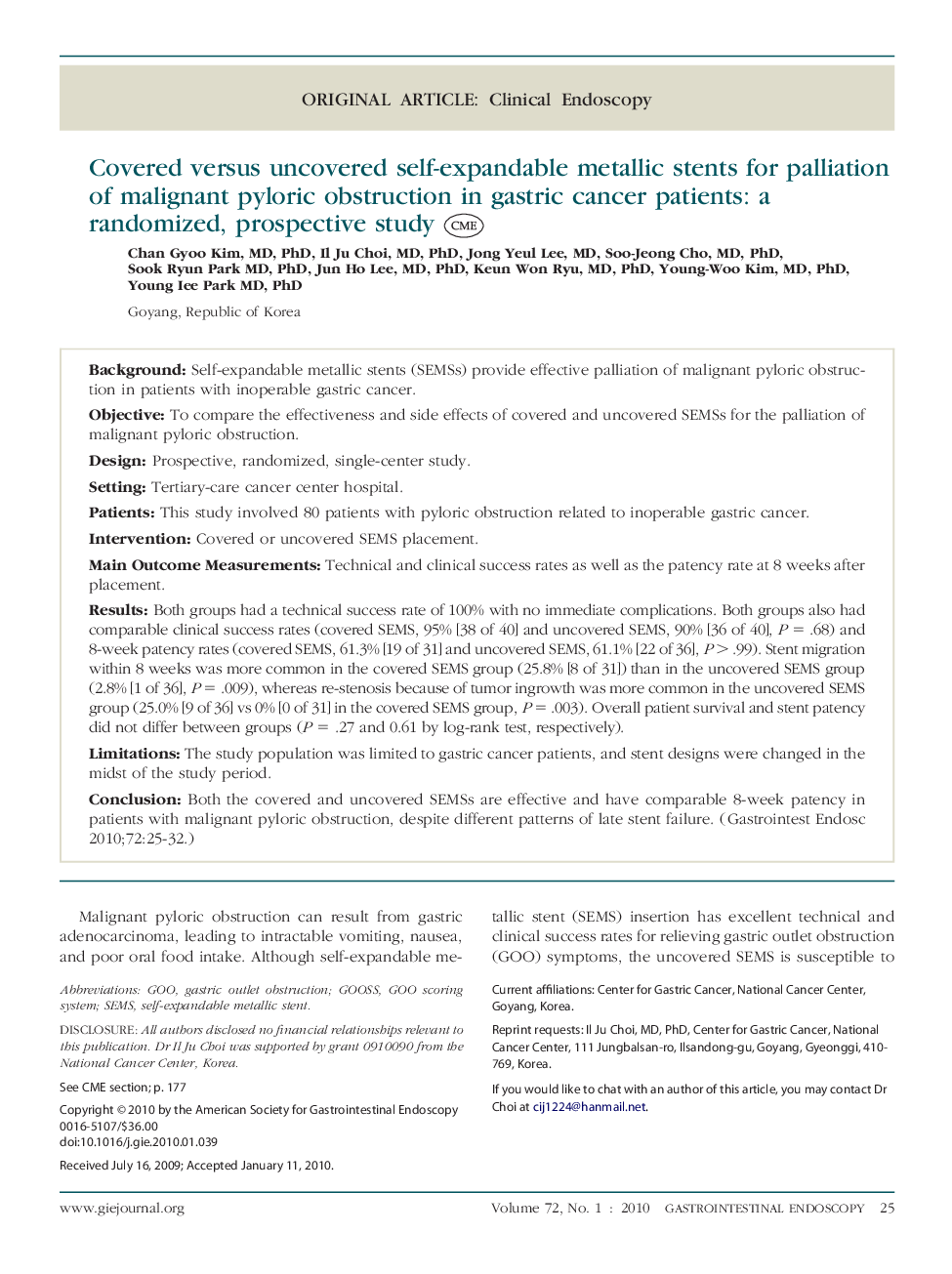| Article ID | Journal | Published Year | Pages | File Type |
|---|---|---|---|---|
| 3306943 | Gastrointestinal Endoscopy | 2010 | 8 Pages |
BackgroundSelf-expandable metallic stents (SEMSs) provide effective palliation of malignant pyloric obstruction in patients with inoperable gastric cancer.ObjectiveTo compare the effectiveness and side effects of covered and uncovered SEMSs for the palliation of malignant pyloric obstruction.DesignProspective, randomized, single-center study.SettingTertiary-care cancer center hospital.PatientsThis study involved 80 patients with pyloric obstruction related to inoperable gastric cancer.InterventionCovered or uncovered SEMS placement.Main Outcome MeasurementsTechnical and clinical success rates as well as the patency rate at 8 weeks after placement.ResultsBoth groups had a technical success rate of 100% with no immediate complications. Both groups also had comparable clinical success rates (covered SEMS, 95% [38 of 40] and uncovered SEMS, 90% [36 of 40], P = .68) and 8-week patency rates (covered SEMS, 61.3% [19 of 31] and uncovered SEMS, 61.1% [22 of 36], P > .99). Stent migration within 8 weeks was more common in the covered SEMS group (25.8% [8 of 31]) than in the uncovered SEMS group (2.8% [1 of 36], P = .009), whereas re-stenosis because of tumor ingrowth was more common in the uncovered SEMS group (25.0% [9 of 36] vs 0% [0 of 31] in the covered SEMS group, P = .003). Overall patient survival and stent patency did not differ between groups (P = .27 and 0.61 by log-rank test, respectively).LimitationsThe study population was limited to gastric cancer patients, and stent designs were changed in the midst of the study period.ConclusionBoth the covered and uncovered SEMSs are effective and have comparable 8-week patency in patients with malignant pyloric obstruction, despite different patterns of late stent failure.
